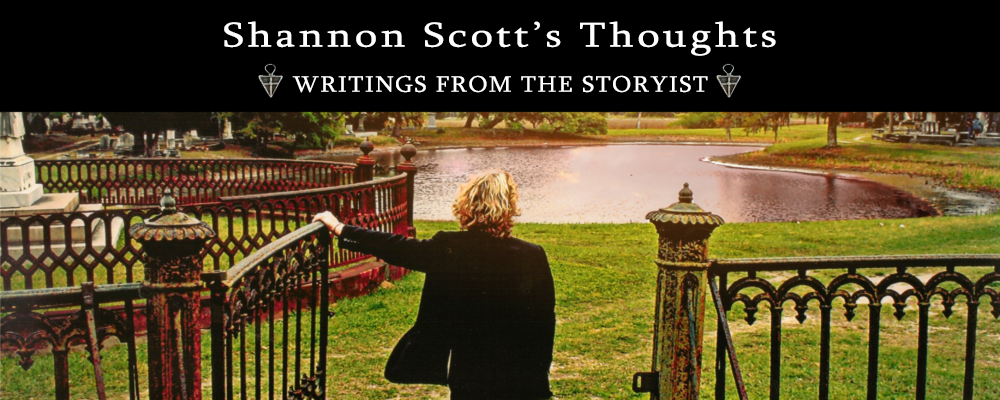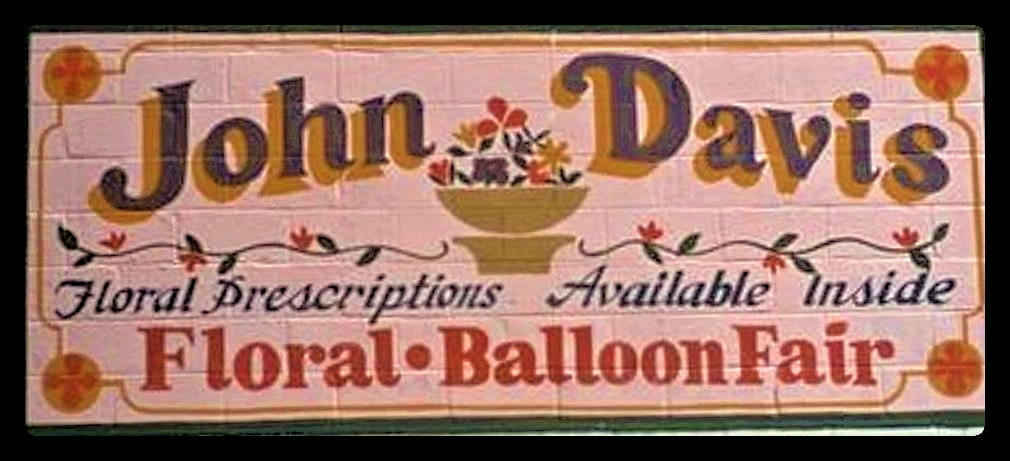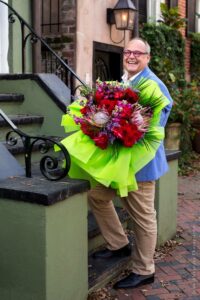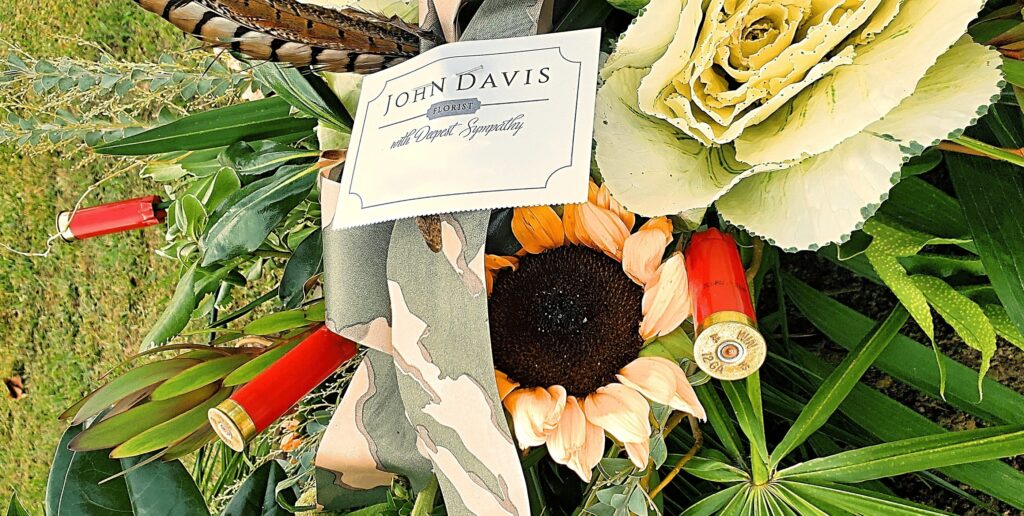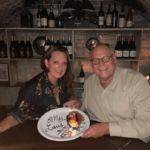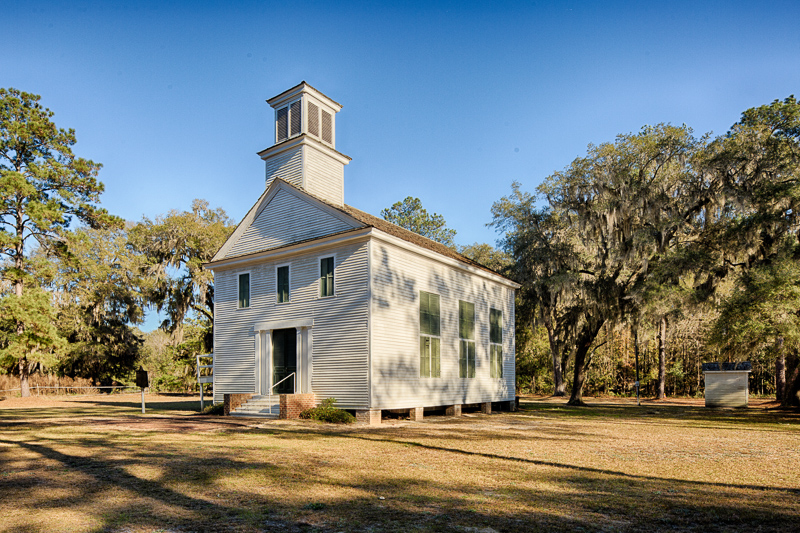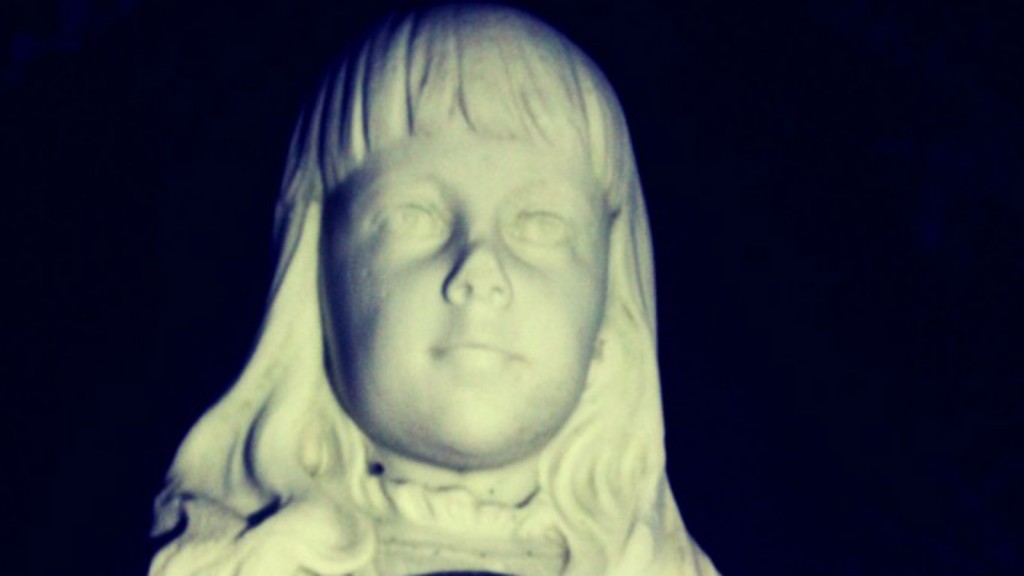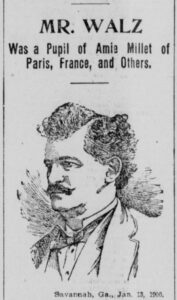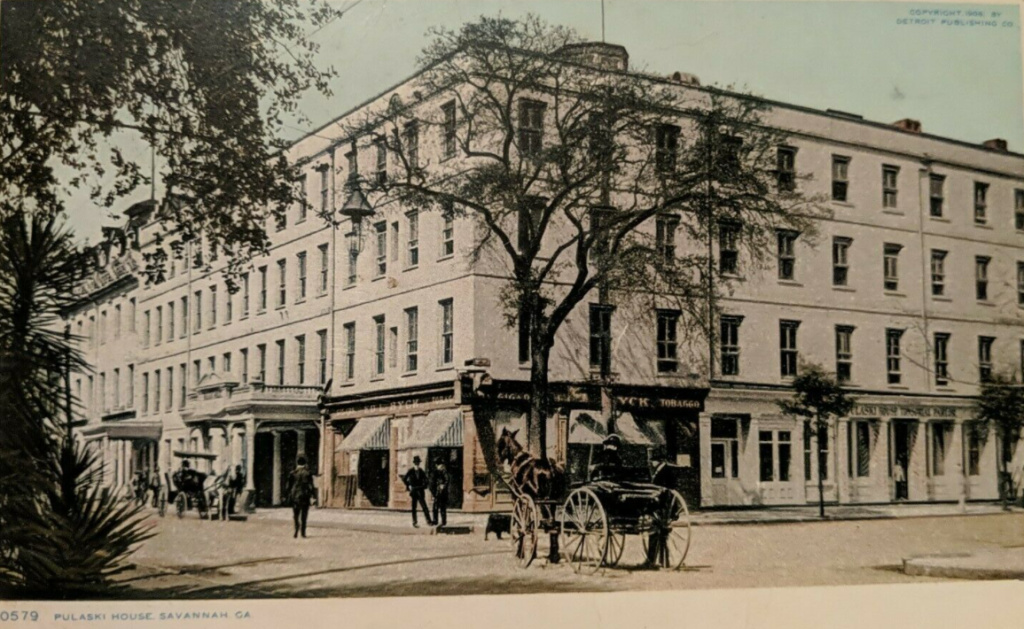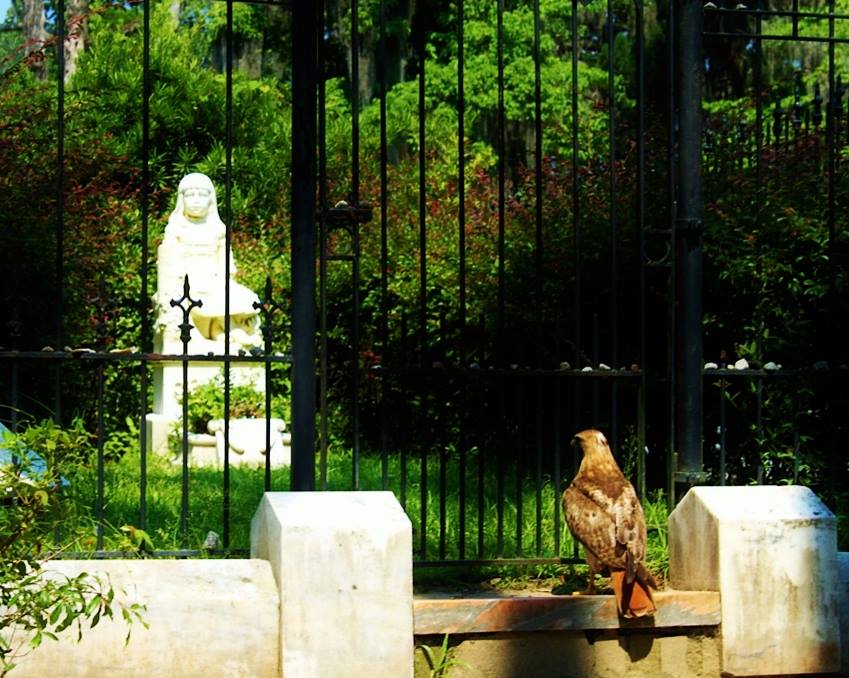Our little lives get complicated
It’s a simple thing
Simple as a flower
And that’s a complicated thing
– David J.
Paul John Davis III November 10, 1966 – November 15, 2021
— A question left unanswered. A void that cannot be filled. It reminds me of those minutes when great sculptors have died — who will do the master’s headstone? Or, in this case, who is worthy to do the flowers of the BuyFlowers’ guy? I wonder if John ever thought about it? Great artists often contemplate such things. That wasn’t very “John,” but if he did, he probably made everyone laugh when answering. I suppose the loving staff of John Davis Florist will do their finest flowers to date. Something very much symbolic and worthy of his incredible life.
Everyone knew that God — in a cosmic artist whim — gave John Davis an extra dose of joy in his spirit or sadness elixir personality. You could just look at John and know that. You can see it in every picture everyone has shared online, depicting his entire life span, since we all learned that he died just 5 days after his 55th birthday. To be honest, I’d not seen any photos of John as a child or younger man until this week, but in each picture, I saw those angelic happiness eyes always ablaze and smile to match. As a stranger, if you caught that kid staring at you like that you might really wonder what he was thinking or what drug he was on making him look at you that way. It could be unnerving if you aren’t accustomed to having a modern-day cherub gawking your direction. Odds are, John was just admiring in you a light you weren’t seeing or needed to be introduced to within yourself, and he was more than prepared to show you through words or flowers. It lived in him at a savant-like level. In the same way there are math savants and artistic savants, John was a “joy savant” with a bit of comic genius thrown in for good measure. You know how there are daredevils or rock climbers they say aren’t born with the fear gene, or whatever that is? John wasn’t born with that, either, but he had an extra happiness gene. And we wondered at him like we marvel at those rock climbers that seem to move so effortlessly.
- John Davis with friend Ann Lindsay Lutz #buyflowers
- John’s childhood friend Cindy Clayton Prescott called him her “favorite swim buddy.” #buyflowers
I’m quite sure John knew what sadness and lament was considering his role as florist, but one probably would never dare accuse him of it. John didn’t have time to be sad or down. That wasn’t in his spirit let alone his vocabulary. He was too busy making sure he gave everyone part of the spark that God gave him, which he found in himself. He could better cure his problems by helping you feel better about your own. John wanted you to have some of the world he saw and experienced because it was so close to something divine, he felt bad if anyone might miss out. In fact, his own spirit insisted upon it and those who experienced him knew that as a fact. John took great joy in people around him. They were his aphrodisiac. He saw all of us as wildflowers, and in order to understand us, he needed to get closer. Or perhaps our flower was lost, and so he stepped in to put our mood in a better arrangement. Being a florist was merely the guise for it all.
I would offer, other than entreprenurial parallels, part of John’s and my personal connection, or perhaps, one he felt towards me originally, was his recognition for my doing creative things around cemeteries. Although, his customers certainly more modern, mine, being more historical. For a long time, I didn’t know, and may not have the timeline details completely correct, John began doing flowers in the back of his mother’s house after his father died in 1983. I’m unsure if he did the flowers for the funeral itself, but recall John saying his mother would ask him to take flowers out to the grave all of the time and he would do various arrangments, making them different each opportunity. He witnessed the happiness it brought to his mother and himself and John Davis Florist was born more or less — pretty special stuff.
I cannot claim John in the way others can claim him for a lifetime, even if he was my friend, too, and I have known him for the better part of 32 years as this unique spirit in Savannah. I’m not sure where I first encountered him, except to say John Davis was most likely to show up in your life out of nowhere. I would routinely pass his shop, John Davis Florist, on Abercorn Street near The Cottage Shop, and both seemed like such long-time institutions. So many of those have faded, you see. Granted, he was the new kid on the business block, but eventually, he earned that “Savannah” classification. I suppose a part of what drew me to John’s place was that our mutual painter friend, Leonard Miller , had worked on some of his early signage, and that was about as local of a statement as one could make. It gave the shop some added street cred, in my mind. I’d collected Leonard Miller’s art and signs, and it would be John, who years later, gave me the sad news Leonard had died a couple years earlier, which I somehow missed the news. He slightly mused about it, but only because someone like me — in my own sort of cemetery business– hadn’t gotten the memo, and John was simply laughing at the irony. But our Leonard had been a fellow joy savant, no question, and it seemed appropriate John would be the messenger. He felt bad, and no surprise, sent me flowers with a personal note that we’d both “lost a good one.” And we had. John was keenly aware of life’s many levels and playing fields, you see. To a stranger, from afar, he might be mistaken of simply being a goofball, aloof or maybe not a serious person. In fact, he’d find all of this about him, from me, a little too serious for his own liking. John wasn’t much to get lost in serious subjects, as I don’t think he was out to be a philosopher. But he was a quietly serious man and could grasp and handle any subject, or if it were too serious for him, he’d let you know that he wasn’t into it but was happy that you were and he meant it. That was kind of our dynamic at times. I think because I deal in history and death most of the time, I’m more serious than I’d like to be. But John was a reminder of my own helium voice and frustrated inner stand-up comic.
Part of the world’s love for John Davis was his generosity at a whim. I recall when I was having a Grand Opening celebration of a store I was about to embark upon, I went in to order some flowers and balloons, and before I could even finish, John said he wanted to donate some of everything because he was just happy for me. How could I argue? And it may be a small thing, but when he’d see me, John would state my full name like “S-H-A-N-N-O-N SCOTT!” He’d say it with his cornball impish grin, but it was his way of acknowledging that you were a VIP in his life book. Always loved that. John Davis loved to make you feel cool. And for a moment you’d let yourself think, “Hey, maybe I am cool!” That was John’s spiritual flower power on tap.
I may lose a few here, but I spend most of my days in cemeteries. When I’m not touring in them professionally, I’m walking in them for exercise and just exploring others. This is how I also stayed in touch with John Davis’ career. Call it morbid, but anytime I saw a new grave in my regular places, I’d go to investigate, and over the years, it has gotten to a point where I know a John Davis arrangement before I’m even at the grave, spying the maker’s name on the card! I always delighted in discovering I was right! I don’t know if I ever got to share that with John in a full way, but I’d garner to say that I became a strange brand of fan just from that perspective alone. Strange to note, but I’ll miss John for those, too. In fact, I walked up to a grave yesterday, just to peek, and of the many surrounding, none were his – end of an era. The last one I knew that bore his creative stamp was just a couple of weeks ago in Hillcrest Abbey East. The first sign of John’s touch were bright red, cherry-colored, shotgun shells looking like cattails mixed in with pheasant feathers, poking up with sunflowers and rather unexpected, camouflage ribbons! Like to hunt much? It had John’s sensitivity and whimsy all at once. Like John winking up at you from the grave. Might be best anology of his style, come to think of it. “Winking up at you from the grave.” Kind of like that. Hope you don’t mind, John.
I don’t think I’m talking too out of school when I say it came as a gladdened surprise to hear John had found real love with his soul mate, Jen Abshire. He’d found the other rare flower, finally. John always seemed to exist in this light of being that was pure love. And such people seem to either never find it, feel they don’t need it, or abstain because it’s like a foreign subject, the idea of ever knowing a true opposite or equal. John deserved to have some of the earthly kind, and he found it in one of the coolest women to ever walk around in Savannah. I’d known Jen as a customer in a deli that I managed, and I knew she was a bright light like from the start. She became John’s “Jackie O” really. A total dream girl, through and through. John’s inner sunrays only grew brighter, frankly, and he never seemed as happy. He knew he was the luckiest man alive like never before and he was. I remember his excitement for the wedding, itself, and the planning like it was the greatest event he’d ever get to do. Knowing I was the history guy, he asked for my thoughts on the old Dorchester Presbyterian Church in Midway, GA as the setting, and told him I was impressed he knew about the hidden Low Country church and reminded me of why I felt kindred to him. All the same, the giddy schoolboy in love had totally come out, and I reveled watching it transpire and like always, felt John had made the whole world happier at the same time.
- John & Jen #buyflowers
- John & Jen #buyflowers
- John & Jen in the bank vault dining room at The Olde Pink House #buyflowers
- John’s flower, Jen #buyflowers
Upon learning of John’s passing, a friend and I hit upon the view that Savannah should be a mystical refuge from death, itself. That all the cool people like John should never have to die. They never really do, of course, because of the way we love them. But still, we needed John to stay longer — like forever. Because of John’s essence, I found myself remarking to a friend, Savannah was like this special ship with a particular crew that made it all work, and now without John it’s like the ship is lopsided. It’s just how it feels to me, and I apologize to John for sounding a bit sadder than he’d allow. The magnitude of John’s loss to his wife Jen, stepchildren, family, friends, not least of all, Savannah culture, is hard to calibrate, except to say no funeral wreath can contain the mourning flowers, and yet we feel John’s sunshine brimming just behind the sadness almost tickling our spirits. Something tells me we’ll all get flowers from him when we least expect it. #buyflowers y’all 912-233-6077
